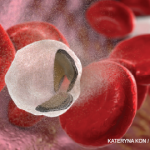“I think we’re definitely closer to [new interventions]. I don’t know if it’s within five or 10 years to see dramatic improvement, but I think the newest developments in neuroimaging are very promising.”
Those improvements need two main boosts. First, Dr. Lee would like to see more scientists and more research dollars focused on the intersection of pain and rheumatology. Second, that research can’t just come from rheumatologists.
“All research in all disciplines … is beginning to move toward this interdisciplinary model as we begin to understand complexities in all conditions,” Dr. Lee says. “It’s increasingly important that both pain research and clinical management of pain are addressed via an interdisciplinary approach. Much larger gains can be made by collaborating across disciplines, and often, it’s not one specialist who has the answer. Often, it might be a rheumatologist who needs to collaborate with a psychologist or a neurologist, so it’s very, very multi-factorial.”
Richard Quinn is a freelance writer in New Jersey.


